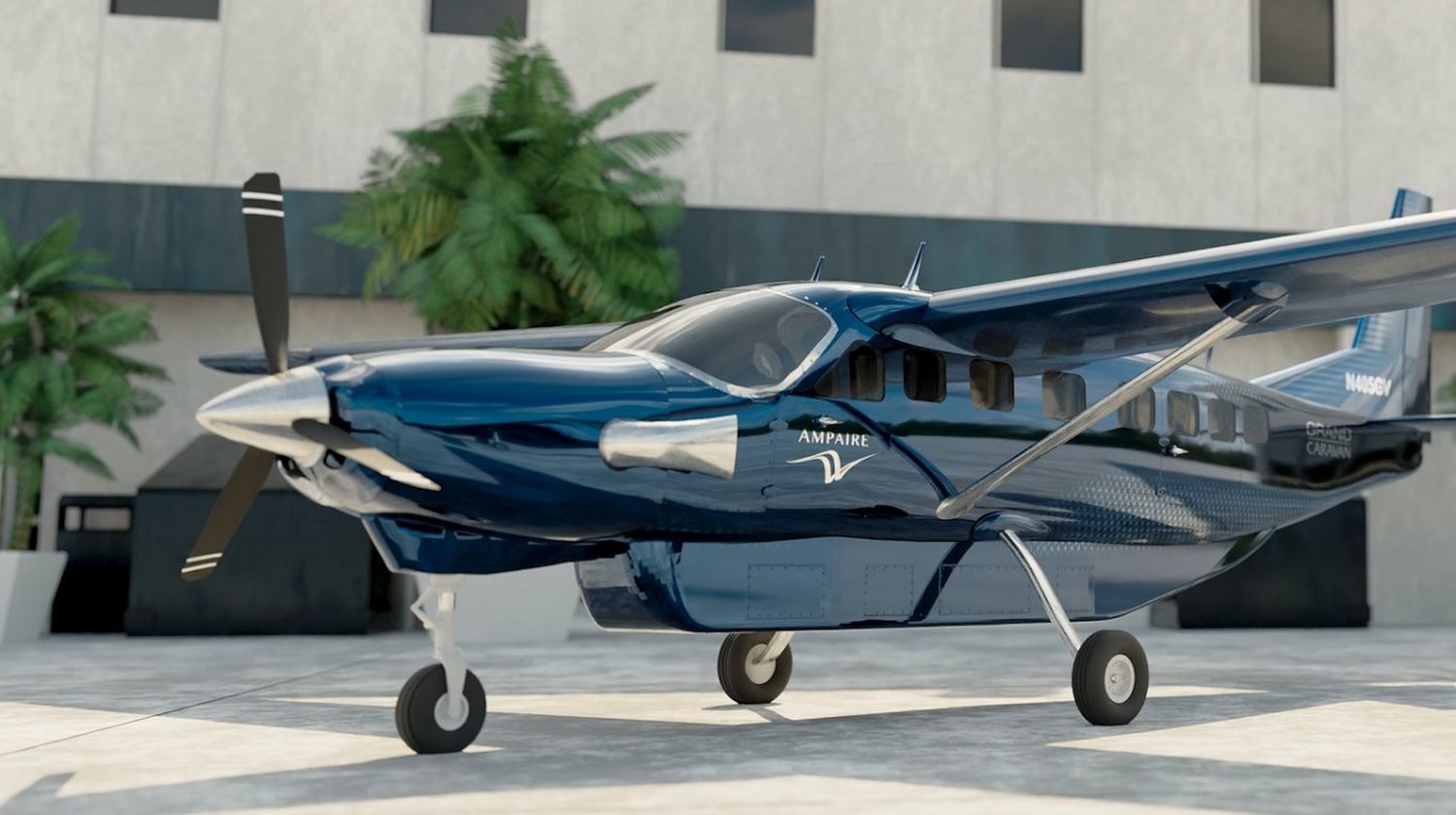Ampaire’s Eco Caravan made its first flight using its hybrid-electric propulsion system.
Ampaire’s Eco Caravan made its first flight using its hybrid-electric propulsion system, taking off from Camarillo and flying for exactly 33 minutes. Ampaire expects its Grand Caravan to be the first electrified regional aircraft to enter commercial service and the first in a series of hybrid aircraft that will seek to lead the transition to sustainable aviation.
Ampaire CEO Kevin Noertker spoke about the technological hurdles that the decarbonization of the industry faces. «Aviation is the most difficult industry to decarbonize,» the executive noted. «The weight and energy density of current generation batteries limits all-electric aircraft. Hybrid aircraft can retain the range of current aircraft, so they are a way for the airline industry to start reducing emissions. In turn, looking to make the business more attractive, it will benefit operators with lower operating costs,» said Noertker.
A «smooth and quiet» first flight
Ampaire’s Eco Caravan, built on the basis of the Cessna Grand Caravan with the addition of a propulsion system that uses a combustion engine and an electric engine with their respective batteries, made its first flight on November 18. This operation lasted 33 minutes and was used to perform the first tests of the propulsion system.
Test pilot Elliot Seguin took off from Camarillo Airport, north of Los Angeles, at 7:49 am. He climbed to 3,500 feet at full power (with the engines working in concert) and then spent approximately 20 minutes testing various power settings. At the end of that stage, he returned safely to Camarillo. After landing, Seguin said, «The Eco Caravan’s propulsion system performed excellently. It was smooth and quiet, and all temperature and power readings were normal.»
According to Ampaire, the Eco Caravan reduces fuel consumption and emissions by up to 70%. If sustainable fuel (SAF) is used, the net emissions produced by the operation of the aircraft are almost zero. In turn, the operating cost is reduced by 25 to 40 percent, depending on the operator’s route structure. Thanks to its hybrid propulsion, the aircraft retains the range and payload capacity of the standard Grand Caravan. In fact, according to the manufacturer, it can fly farther than the base model: the maximum range is more than 1,000 miles.
First to market
The unit can recharge its batteries in flight or at a charging station, which is critical during the first few years of operation when infrastructure will be limited. The Eco Caravan’s propulsion technology is, scalable to larger regional aircraft, so Ampaire plans to develop more powerful propulsion systems. About that topic, Norterker noted that «while we are proud of the Eco Caravan, we see it only as a first step toward larger hybrid-electric propulsion systems. Ultimately we will look to develop zero-emission systems as energy storage technology advances.»
Ampaire is working with the FAA to certify the Eco Caravan in 2024 under a supplemental type certificate (STC). Ampaire’s approach differs from others in that it does not require a complete aircraft certification program. Since the Grand Caravan is already FAA-approved, Ampaire will only need to certify the new propulsion system.
«Getting hybrid-electric aviation up and running is not a simple task, but we’ve made it easier by upgrading an already certified aircraft,» Noertker said. «We will get to market faster and allow airlines around the world to start gaining operational experience with this new type of propulsion.»
The program has attracted several customers and participants in recent months. In October, Air France Industries KLM Engineering and Maintenance (AFI KLM E&M) teamed up with Ampaire to provide service and maintenance for the manufacturer’s aircraft. Last month, the company also received an order from MONTE for up to 50 Eco Caravans.


Comentarios
Para comentar, debés estar registrado
Por favor, iniciá sesión